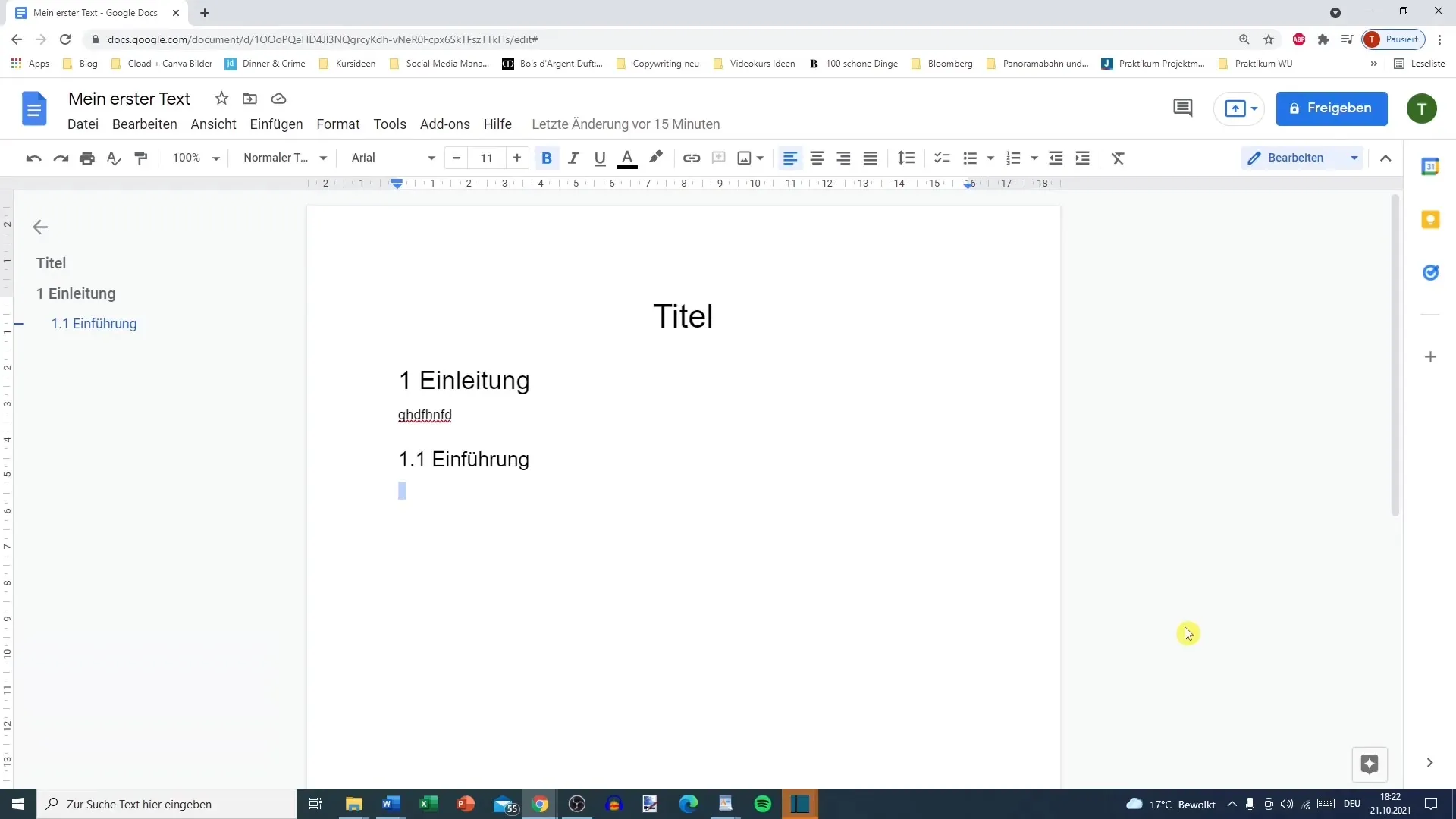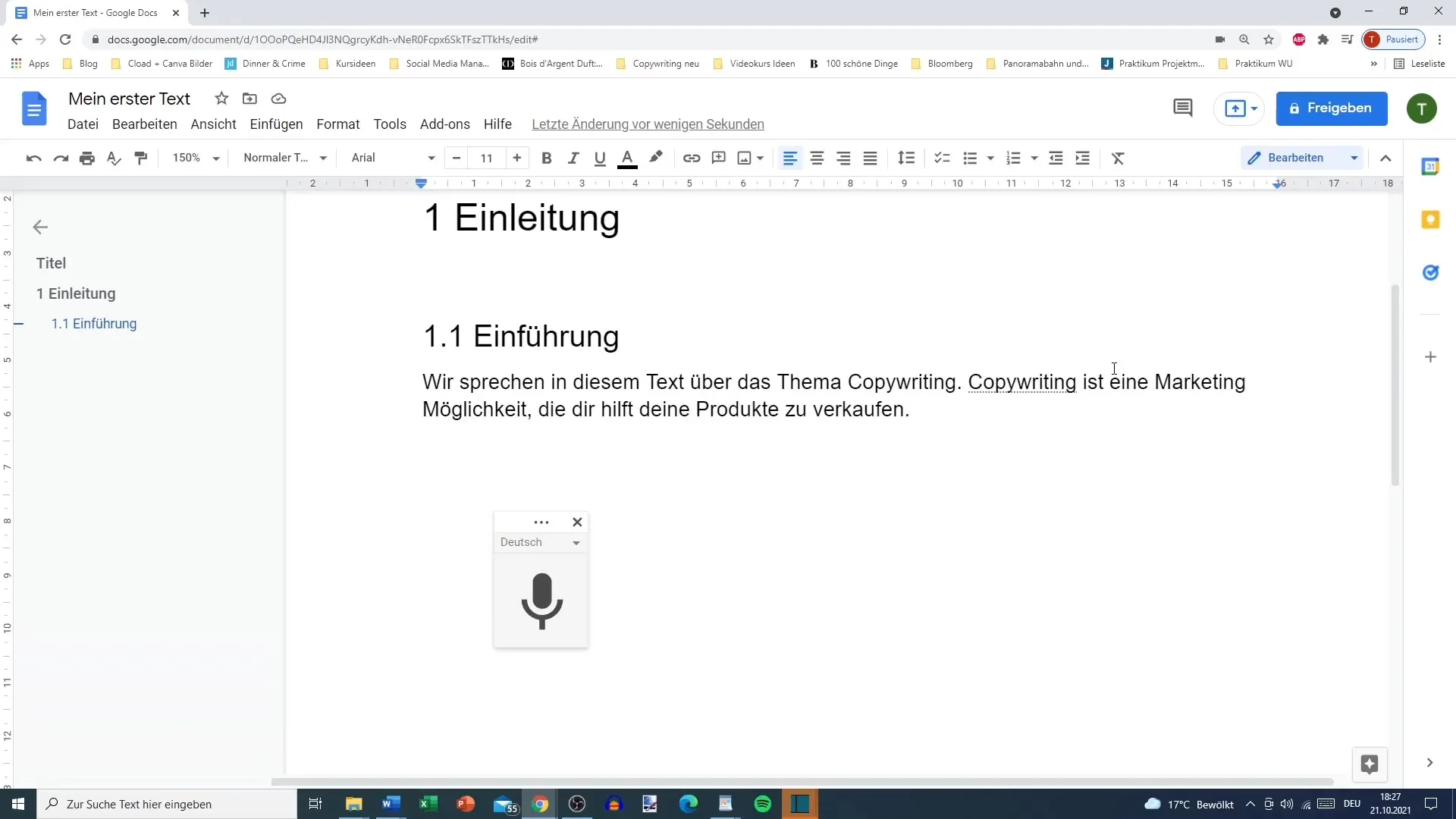You want to efficiently capture your texts in Google Docs without typing them painstakingly? Then voice input is an excellent way to optimize your writing process. In this tutorial, I will show you how to use the speech-to-text function in Google Docs and provide some useful tips to help you create precise and error-free texts. Let's get started!
Key Takeaways
- Voice input in Google Docs is a time-saving way to create texts.
- Make sure to select the correct language to avoid misunderstandings in text input.
- Punctuation such as period or comma must be explicitly mentioned, as the program does not automatically recognize the correct punctuation.
- Google Docs learns from your corrections, improving the quality of transcriptions over time.
Step-by-Step Guide to Using Voice Input
Prepare the Microphone
Before you can use voice input in Google Docs, you need a microphone. This can be a simple headphone microphone from your phone. Alternatively, it is recommended to use a desktop microphone that provides better audio quality. You should ensure that your microphone is properly connected and set up.

Open Google Docs
First, open Google Docs in your web browser. You need to log in with your Google account if you haven't already. Google Docs' interface is intuitive and easy to navigate, allowing you to get started quickly.
Activate Voice Input
After opening a new document, go to the top menu and select "Tools." Here you will find the option for "Voice Typing." Alternatively, you can use the shortcut "Ctrl + Shift + S" to quickly activate voice input. A small microphone icon will appear that you can move to place it in a suitable location in the document.
Select Language
Before you start speaking, it is crucial to select the correct language. Click on the microphone icon and choose the language you want to use. Note that there are regional differences. For example, Swiss and Austrian German may have differences that need to be considered.
Speak and Create Texts
Now you can click on the microphone icon and speak your thoughts freely into the microphone. Your spoken text will be transcribed directly into the document as long as the microphone is active. Make sure to pause between sentences and directly state the periods and commas accordingly. Use formal phrases like "period" for a period and "comma" for a comma.
Review and Edit Text
After speaking, you should carefully review the transcribed text as Google Docs does not always work with correct spelling and grammar. Sometimes you may notice spelling errors or missing punctuation marks that you need to correct manually.
Additional Corrections
Once you have finished the text, there are several options for correction. You can simply read through your document yourself or use free tools to help you check spelling and grammar.

Save and Finish Text
Once you are satisfied with your document, save it. Google Docs automatically saves all changes as long as you are connected to the internet. You can also download the document or save it directly in Google Drive.
Summary
Voice input in Google Docs provides you with a fast and efficient way to create texts. Selecting the right language and clearly stating punctuation are important. By regularly correcting and reviewing, you can further improve the quality of your written word.
Frequently Asked Questions
How do I activate voice input in Google Docs?Go to "Tools" and select "Voice Typing" or use the shortcut "Ctrl + Shift + S".
Which microphones are suitable for voice input?A simple headphone microphone or a high-quality desktop microphone are suitable.
How do I select the correct language in Google Docs?Click on the microphone icon and choose the desired language from the dropdown menu.
Do I need to manually state punctuation marks?Yes, Google Docs does not automatically recognize punctuation marks, they need to be stated.
Can I make changes after voice input?Yes, you can review and edit the transcribed text at any time.


